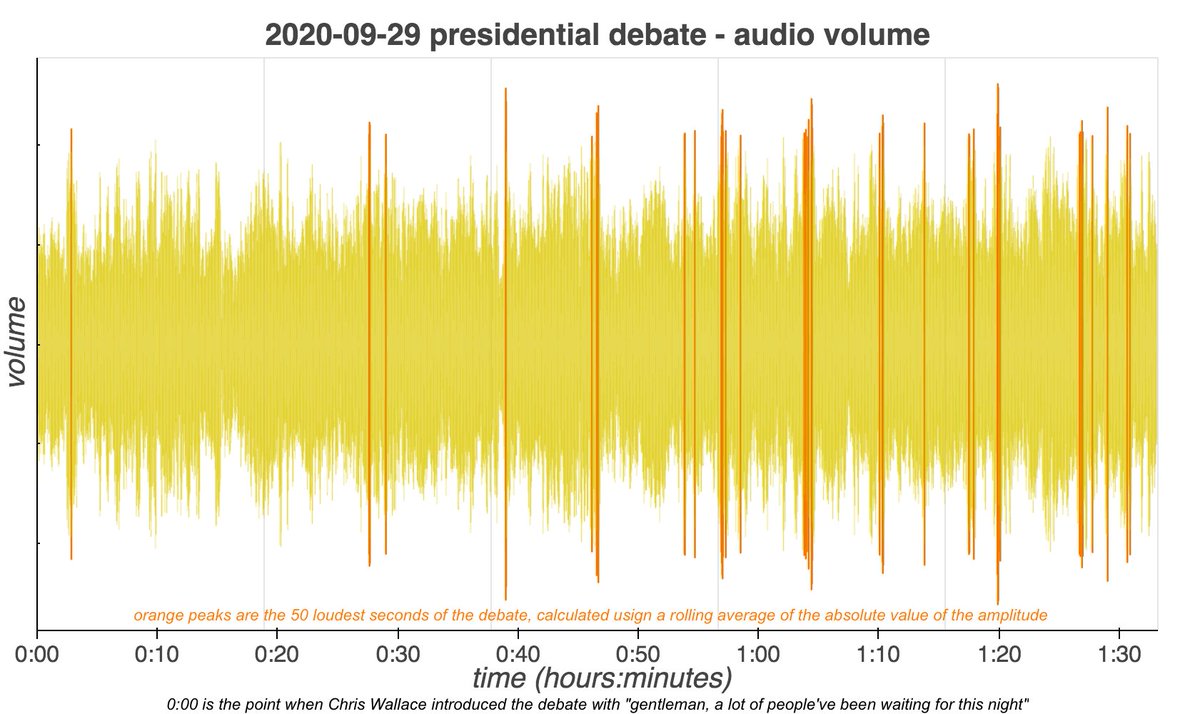The first debate between Joe Biden and Donald Trump took place last night (September 29th, 2020). We took a look (or rather a listen) to determine what topics were the most loudly discussed, and by whom.
cc: @ZellaQuixote
cc: @ZellaQuixote

We analyzed the debate audio and identified the 50 loudest peaks, based on a rolling one-second average of the amplitude of the audio signal. The loud portions became increasingly frequent as the debate went on. 

Next, we listened to the 50 loudest peaks, along with the surrounding audio for context. In multiple cases, multiple peaks were only a few seconds apart and were part of the same sentence or exchange, so we combined those.
Here are the results. 20 of the loudest moments are from Trump, compared to 5 from Biden. Mail-in voting, antifa, and "law and order" are major themes of Trump's noisier verbiage. Biden's louder moments are mostly replies to/rebuttals of Trump's statements. 

• • •
Missing some Tweet in this thread? You can try to
force a refresh































